Utah has a very unique and diverse history. From Native Americans to trappers, traders, explorers, Mormon pioneers to cowboys. The big mining boom, to the railroad and then finally State Hood. Along the way pieces of history were left behind waiting to be explored. Dwellings of Utah's Native Americans, to ghost towns of the old mining boom, to houses built by the Mormon pioneers. These sites have been set aside for our generation to learn more about Utah's past. Below you find a list of sites that we have visited with information about each.
Is the Bloomington Petroglyph Park Worth the Visit?
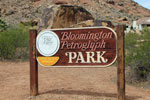 Over the years, I’ve heard about a little park located in the middle of a residential neighborhood called the Bloomington Petroglyph Park. Knowing that this park is in a very accessible location, I’ve always wondered, how persevered could the Native American Rock actually be? If, there is one thing I have noticed, while traveling all over the state of Utah, the more accessible areas, seem to be more prone to vandalism. This park is probably one the of most accessible locations, to see and view some of Utah’s ancient rock carvings.
Over the years, I’ve heard about a little park located in the middle of a residential neighborhood called the Bloomington Petroglyph Park. Knowing that this park is in a very accessible location, I’ve always wondered, how persevered could the Native American Rock actually be? If, there is one thing I have noticed, while traveling all over the state of Utah, the more accessible areas, seem to be more prone to vandalism. This park is probably one the of most accessible locations, to see and view some of Utah’s ancient rock carvings.
The Tintic Train Tunnel
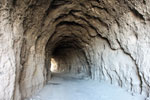 The Tintic Train Tunnel is unique because it’s a family friendly way to experience Utah’s mining past. Sometimes referred to as the Elberta Slant Railroad Tunnel, this tunnel extends more than 200 feet. It was created near the town of Elberta to make way for the Tintic Range Railway. While many mining rails were dedicated to coal, this one actually helped bring valuable silver from the area’s mines.
The Tintic Train Tunnel is unique because it’s a family friendly way to experience Utah’s mining past. Sometimes referred to as the Elberta Slant Railroad Tunnel, this tunnel extends more than 200 feet. It was created near the town of Elberta to make way for the Tintic Range Railway. While many mining rails were dedicated to coal, this one actually helped bring valuable silver from the area’s mines.
Visit to the Historic Wendover Airfield
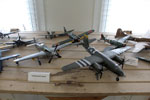 Do you enjoy history? Do you believe preserving history is an important way of educating the future? Well, the many staff and volunteers at the Historic Wendover Airfield think so, and they have done an amazing job of restoring, and telling the story of this once booming Army Air Force training base. Because of their hard work a dedication to preserving this piece of American history, you and your family can see and learn about all of the events that once took place so far out in Utah's West Desert.
Do you enjoy history? Do you believe preserving history is an important way of educating the future? Well, the many staff and volunteers at the Historic Wendover Airfield think so, and they have done an amazing job of restoring, and telling the story of this once booming Army Air Force training base. Because of their hard work a dedication to preserving this piece of American history, you and your family can see and learn about all of the events that once took place so far out in Utah's West Desert.
Discovering Utah’s Ancient Rock Art
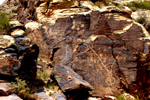 Native American rock art can be found throughout Utah. In fact, Utah is home to hundreds of thousands of individual examples of rock art. Many of the state’s most acclaimed sites are found in southern Utah, with popular locations, including Cedar Mesa, Sego Canyon and Indian Creek Canyon. Of course, no discussion of Utah rock art is complete without mentioning Nine Mile Canyon.
Native American rock art can be found throughout Utah. In fact, Utah is home to hundreds of thousands of individual examples of rock art. Many of the state’s most acclaimed sites are found in southern Utah, with popular locations, including Cedar Mesa, Sego Canyon and Indian Creek Canyon. Of course, no discussion of Utah rock art is complete without mentioning Nine Mile Canyon.
Pet Cemetery Lookout Pass Utah
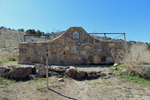 Utah’s west desert is full of historical locations such as petroglyph sites, old mining towns, and historical sites along the Pony Express Route. One such location is the Pet Cemetery located at Lookout Pass. At the top of the pass, one can stop and enjoy the view far out into Utah’s west desert. Today this view is a scenic vista, however, in 1860 this was a chance for the Pony Express Riders to view the trail ahead, known as “Piute Hell”.
Utah’s west desert is full of historical locations such as petroglyph sites, old mining towns, and historical sites along the Pony Express Route. One such location is the Pet Cemetery located at Lookout Pass. At the top of the pass, one can stop and enjoy the view far out into Utah’s west desert. Today this view is a scenic vista, however, in 1860 this was a chance for the Pony Express Riders to view the trail ahead, known as “Piute Hell”.
Dinosaur Track Recreation Site
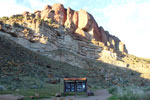 Many times, when you talk about places to see dinosaur fossils in their natural environment the response is usually Dinosaur National Monument. However, as we continue to explore the great outdoors in this beautiful state, we continue to learn that remnants of Utah’s Jurassic period can be found all over. One example is Dinosaur Discovery Site at Johnson Farm located in St. George, and the other is the Dinosaur Track Recreation Site located along the Parowan Gap Road.
Many times, when you talk about places to see dinosaur fossils in their natural environment the response is usually Dinosaur National Monument. However, as we continue to explore the great outdoors in this beautiful state, we continue to learn that remnants of Utah’s Jurassic period can be found all over. One example is Dinosaur Discovery Site at Johnson Farm located in St. George, and the other is the Dinosaur Track Recreation Site located along the Parowan Gap Road.
Newspaper Rock Recreation/Historic Site
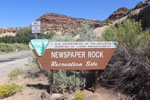 The Newspaper Rock Historic Site in San Juan County, Utah, is a rock panel displaying one of the largest known collections of petroglyphs. The rock face is 200-square feet and records approximately 2,000 years of early human activity. The first to make their mark were the Archaic, Basketmaker, Fremont, and Pueblo cultures. In later times the Ute, Navajo, and European Americans also made their contributions.
The Newspaper Rock Historic Site in San Juan County, Utah, is a rock panel displaying one of the largest known collections of petroglyphs. The rock face is 200-square feet and records approximately 2,000 years of early human activity. The first to make their mark were the Archaic, Basketmaker, Fremont, and Pueblo cultures. In later times the Ute, Navajo, and European Americans also made their contributions.
Harold Mill / Goshen Warm Springs
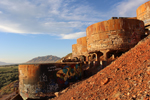 Just before you enter the town of Genola Utah, you may notice a castle like colorful concrete structure perched up on the hill side. This strange looking structure is colorful because of the layers and layers of spray paint put on by the countless graffiti artists over many years. Now, I have my opinion on graffiti and I'm sure you do too. However, this is not the typical graffiti, it's more like wall art. If you feel completely disgusted that someone would spray paint an historical structure, then you may want to avoid visiting this location because it's everywhere.
Just before you enter the town of Genola Utah, you may notice a castle like colorful concrete structure perched up on the hill side. This strange looking structure is colorful because of the layers and layers of spray paint put on by the countless graffiti artists over many years. Now, I have my opinion on graffiti and I'm sure you do too. However, this is not the typical graffiti, it's more like wall art. If you feel completely disgusted that someone would spray paint an historical structure, then you may want to avoid visiting this location because it's everywhere.
Four Ghost Towns to Visit in Utah
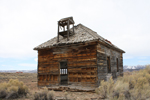 Because Utah’s history was often intertwined with the boom/bust mining industry, it’s unsurprising that our state has lots of ghost towns. These sites range from streets lined with buildings to lonely outposts, but they all offer opportunities to connect with the past in a special way. This article showcases four sites that are scattered throughout the state.
Because Utah’s history was often intertwined with the boom/bust mining industry, it’s unsurprising that our state has lots of ghost towns. These sites range from streets lined with buildings to lonely outposts, but they all offer opportunities to connect with the past in a special way. This article showcases four sites that are scattered throughout the state.
The Great Hunt Panel
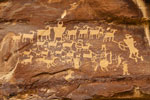 Known as Utah’s outdoor museum, Nine Mile Canyon is home to an abundance of well-preserved rock art. For 8,000 years people have populated Nine Mile Canyon. The earliest inhabitants were the Fremont Culture who occupied this area 1,000 years ago. Most of the famous rock art panels were remnants of the Fremont, including the famous “Great Hunt Panel”. This panel has been replicated on many modern art pieces and has been featured in many publications.
Known as Utah’s outdoor museum, Nine Mile Canyon is home to an abundance of well-preserved rock art. For 8,000 years people have populated Nine Mile Canyon. The earliest inhabitants were the Fremont Culture who occupied this area 1,000 years ago. Most of the famous rock art panels were remnants of the Fremont, including the famous “Great Hunt Panel”. This panel has been replicated on many modern art pieces and has been featured in many publications.
Buck Horn Wash
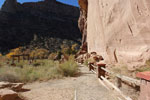 2000 years ago ancient Indians pecked and painted this rock. The peckings on the rock are called “petroglyphs”, and the paintings on the rock are called pictographs. The Buck Horn Wash Ancient Petroglyphs and Pictographs These drawings are on the cliff face right next to the main road through “The Buckhorn Wash”. These are perhaps the best drawings in the area that I have seen, they are worth the trip, and be sure to bring your camera the scenery is exquisite! This is one of Utah’s best kept secrets.
2000 years ago ancient Indians pecked and painted this rock. The peckings on the rock are called “petroglyphs”, and the paintings on the rock are called pictographs. The Buck Horn Wash Ancient Petroglyphs and Pictographs These drawings are on the cliff face right next to the main road through “The Buckhorn Wash”. These are perhaps the best drawings in the area that I have seen, they are worth the trip, and be sure to bring your camera the scenery is exquisite! This is one of Utah’s best kept secrets.
Dry Fork Canyon
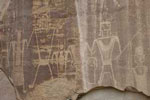 The rock art located up Dry Fork Canyon is world renowned and located along a 200-foot-high "Navajo Formation" sandstone cliff. These petroglyphs are located on the Sadie McConkie Ranch, a private property, but have remained accessible to the public, all they ask is that visitors do not damage the sites, and obey all signs. Nowhere else can you see more petroglyphs in one area that are so easily accessible.
The rock art located up Dry Fork Canyon is world renowned and located along a 200-foot-high "Navajo Formation" sandstone cliff. These petroglyphs are located on the Sadie McConkie Ranch, a private property, but have remained accessible to the public, all they ask is that visitors do not damage the sites, and obey all signs. Nowhere else can you see more petroglyphs in one area that are so easily accessible.